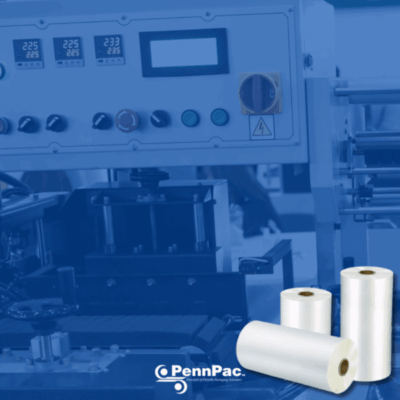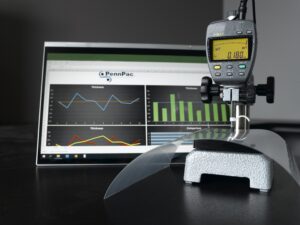
Key Takeaways
- Understanding the unique properties of Cast PP films (CPP)
- Differentiating Cast PP films from other Polypropylene films
- Exploring various applications and advantages
- Insights into future trends and innovations
Table of Contents
- Introduction
- What Are Cast Polypropylene (Cast PP) Films?
- Characteristics of Cast PP Films
- Production Process of Cast PP Films
- Applications of Cast Polypropylene Films
- Advantages of Using Cast PP Films
- Comparing Cast PP Films to Other Polypropylene Films
- Future Trends in Cast Polypropylene Films
- Conclusion
- Additional Resources
Introduction
Cast Polypropylene films (Cast PP or CPP) are increasingly recognized as versatile and essential materials across various industries. Furthermore, their unique properties, including unparalleled flexibility, high clarity, impressive heat sealability, and remarkable durability. This blog post aims to provide a thorough overview of CPP films, covering their definition, characteristics, manufacturing process, applications, advantages, comparisons with other polypropylene films, and future trends.
What Are Cast Polypropylene (Cast PP or CPP) Films?
Definition of CPP Films
CPP films are polypropylene films manufactured through the cast extrusion process. This method results in films that are non-oriented or lightly oriented, providing specific advantages in flexibility and other properties. Known for their excellent clarity and smooth surface finish, CPP films stand out in various applications.
Basic Structure and Characteristics
The basic structure involves a flat extrusion process followed by rapid cooling on chilled rollers. This quick cooling leads to superior clarity and surface smoothness, setting Cast PP films apart from other films. The smooth surface enables better printability and enhanced performance in various uses.
Differentiation from other Polypropylene Films
CPP films differ significantly from other polypropylene films, such as BOPP (biaxially oriented polypropylene). While BOPP films undergo biaxial stretching, CPP films do not, which alters their mechanical properties.
- Mechanical Properties: CPP films tend to be more flexible and less stiff than their BOPP counterparts, making them suitable for a broader range of applications, particularly in flexible packaging.
- Typical Applications: BOPP films are commonly used in semi-rigid packaging and printing, whereas cast PP films excel in areas where clarity and flexibility are paramount.
Characteristics of Cast PP Films
Flexible CPP Properties
Flexible CPP films are characterized by high flexibility and durability. Ultimately, making them ideal for complex shapes and deep-draw applications. The excellent clarity, achieved during the cooling process, is crucial for making product contents visible and attractive.
Physical and Chemical Properties
- Low Friction Surface: The surface of CPP film has low friction, which reduces wear on processing equipment. Ultimately, facilitating smoother production runs.
- Moisture Resistance: These films also boast good moisture resistance, enhancing their performance in a variety of applications. They help in protecting packaged goods by limiting moisture ingress. (https://www.pennpac.com/news/basics-of-polyester-film/)
- Antistatic Properties: Cast PP films exhibit antistatic characteristics, which are beneficial in applications where static charges could interfere with product integrity.
Thermal and Mechanical Performance
Cast PP films are known for their high heat sealability, allowing for strong and reliable seals at elevated temperatures. This quality is especially important in food packaging, where maintaining product freshness is crucial. Additionally, their durability ensures that the films do not tear or lose integrity under stress, enhancing their suitability for various demanding applications.
Production Process of CPP Films
Step-by-Step Manufacturing Overview
- Extrusion: The process begins with molten polypropylene being extruded through a narrow die to form a thin film.
- Casting: This molten film is then cast onto chilled rolls. Rapid cooling during this step allows the film to solidify quickly, maintaining its characteristics.
- Thickness and Surface Control: The casting process allows for precise control of the film’s thickness and surface finish, ensuring high-quality output.
Advantages of Cast vs. Blown Films
Compared to blown films, CPP films offer several distinct advantages:
- Superior Clarity and Smoothness: The rapid cooling process used in casting results in excellent clarity and a very smooth surface finish.
- Stronger Heat Seals: Cast films provide stronger heat seals than blown counterparts, enhancing packaging reliability.
- Uniform Thickness: The casting method also ensures uniform thickness and surface quality, leading to better performance in end applications.
Quality Control Measures
Quality control during production is critical to ensuring consistent product quality. Measures are taken to maintain uniform thickness, surface quality, and reliable sealing properties, ensuring that every lot meets stringent standards.
Applications of Cast Polypropylene Films
Flexible Packaging
Cast PP films are widely utilized in flexible packaging, including:
- Food Packaging: Ideal for bread bags, vegetable bags, and other food packaging solutions. Their moisture resistance and heat sealability are crucial for maintaining food quality and freshness.
- Medical Packaging: Critical for medical applications, where reliable seals and barrier properties are essential to ensure safety and compliance.
Industrial Applications
In industrial sectors, CPP films find varied applications, including:
- Battery Packaging: Offering excellent protection and sealing for batteries and similar products.
- Specialized Industrial Films: Tailored for various purposes, ensuring durability and reliability.
Labeling and Laminating
Due to their clarity and strong sealing capabilities, Cast PP films are also popular in labeling and laminating. Their surface qualities enable high-quality prints and labels, enhancing the overall presentation of products. (https://www.pennpac.com/news/versatile-bopp-film/)
Case Studies and Examples
Some examples of successful applications of flexible cast PP include:
- Food packaging companies using cast PP films to extend shelf life and maintain the freshness of their products.
- Medical device manufacturers relying on cast PP for packaging that requires stringent sealing standards.
For more on the applications of CPP films, check this overview, and the ultimate solution in flexible packaging.
Sustainability Aspects
As a recyclable material, polypropylene presents sustainability advantages, appealing to environmentally conscious industries. The potential for better recycling streams makes CPP films desirable in modern packaging solutions.
Comparing Cast PP Films to Other Polypropylene Films
The following comparison table summarizes the differences between CPP films and other PP films (e.g., BOPP):
| Feature | Cast PP Films | Blown PP Films (e.g., BOPP) |
|---|---|---|
| Orientation | Non-oriented or lightly oriented | Biaxially oriented |
| Clarity and Gloss | Excellent clarity and smoothness | High gloss, slightly lower clarity |
| Mechanical Properties | Flexible, good deep-draw | High strength and dimensional stability |
| Heat Sealability | Strong, high heat seal strength | Moderate heat seal strength |
| Typical Applications | Flexible packaging, lamination | Rigid packaging, printing |

Future Trends in Cast Polypropylene Films
Innovations and Advancements
The Cast Polypropylene films sector is witnessing ongoing innovations aimed at:
- Improving Barrier Properties: There is a significant emphasis on enhancing moisture and oxygen barriers to better protect contents.
- Sustainability Efforts: Development of bio-based polypropylene and increasing recyclability options are in focus, aligning with global sustainability trends.
New applications are emerging, especially within the electronics industry, where CPP films are finding specialized uses.
Conclusion
In summary, CPP films represent a critical component in modern packaging and industrial applications. Their unique properties, diverse applications, and advantages make them a valuable choice for manufacturers looking to optimize their product offerings. Understanding the characteristics of CPP films enables informed decision-making for specific industrial and packaging needs.
For any inquiries or further detailed information on CPP films, feel free to reach out to PennPac.
FAQ
What are the main advantages of cast PP films over other types?
Cast PP films offer superior flexibility, excellent clarity, strong heat sealability, and higher durability compared to other polypropylene films like BOPP.
In which industries are cast PP films most commonly used?
They are widely used in flexible packaging, food packaging, medical packaging, industrial applications, and labeling and laminating.
Are cast PP films recyclable?
Yes, cast PP films are recyclable, making them an environmentally friendly option for various packaging solutions.
How do cast PP films compare in terms of heat sealability?
Cast PP films have stronger and more reliable heat seals at elevated temperatures compared to blown PP films, enhancing packaging reliability.
What are the future trends for cast PP films?
Future trends include improvements in barrier properties, increased sustainability through bio-based materials, and expanding applications in industries like electronics.


